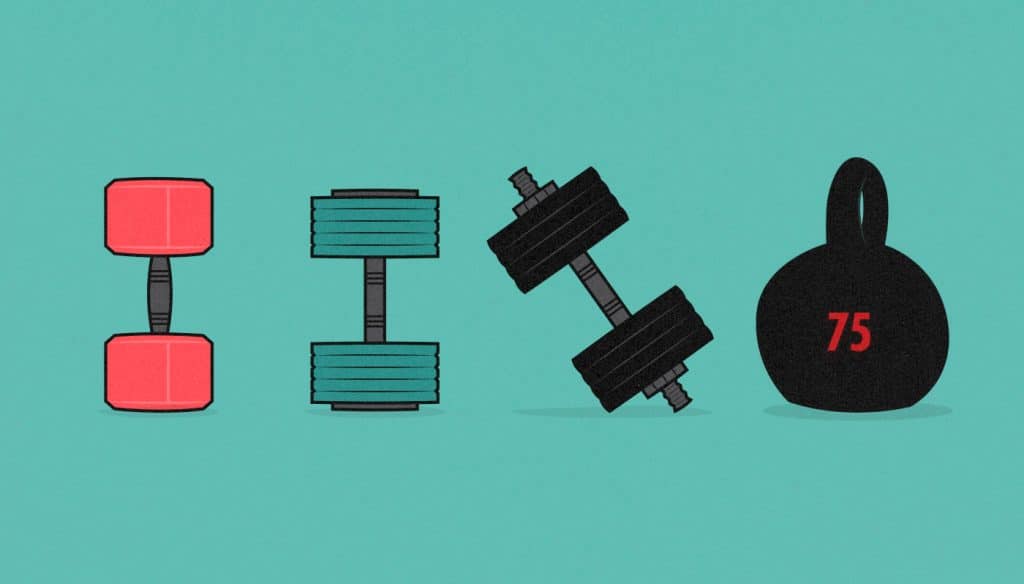
Best Equipment For Women To Build Muscle
One of the most common questions we get from our female members is, “What equipment do I need to build muscle?” You can use a few different setups, but some setups are particularly good for gaining muscle size and strength. Let’s take a look.
Do You Need A Gym To Build Muscle?
The short answer is no.
- You could build a dumbbell home gym.
- Use resistance bands.
- Get a membership at a commercial gym.
- Build a barbell home gym.
- Do bodyweight training.
All of these options are viable. You can build muscle with anything. Even your own body weight. But some of these setups make it easier to build muscle than others, and each has pros and cons.
Building a Dumbbell Gym At Home
A dumbbell home gym is the most versatile way for women to train at home. You can load your adjustable dumbbells gradually heavier, you can do a staggering number of different exercises, and you won’t have any problems stimulating muscle growth.
Then, when you’re done, you can store them in a closet. Back when I lived in a small apartment in downtown Toronto, I kept a pair of adjustable dumbbells and an adjustable bench in my closet. I’d bring them into my living room and then put them away again.
Types of Dumbbells
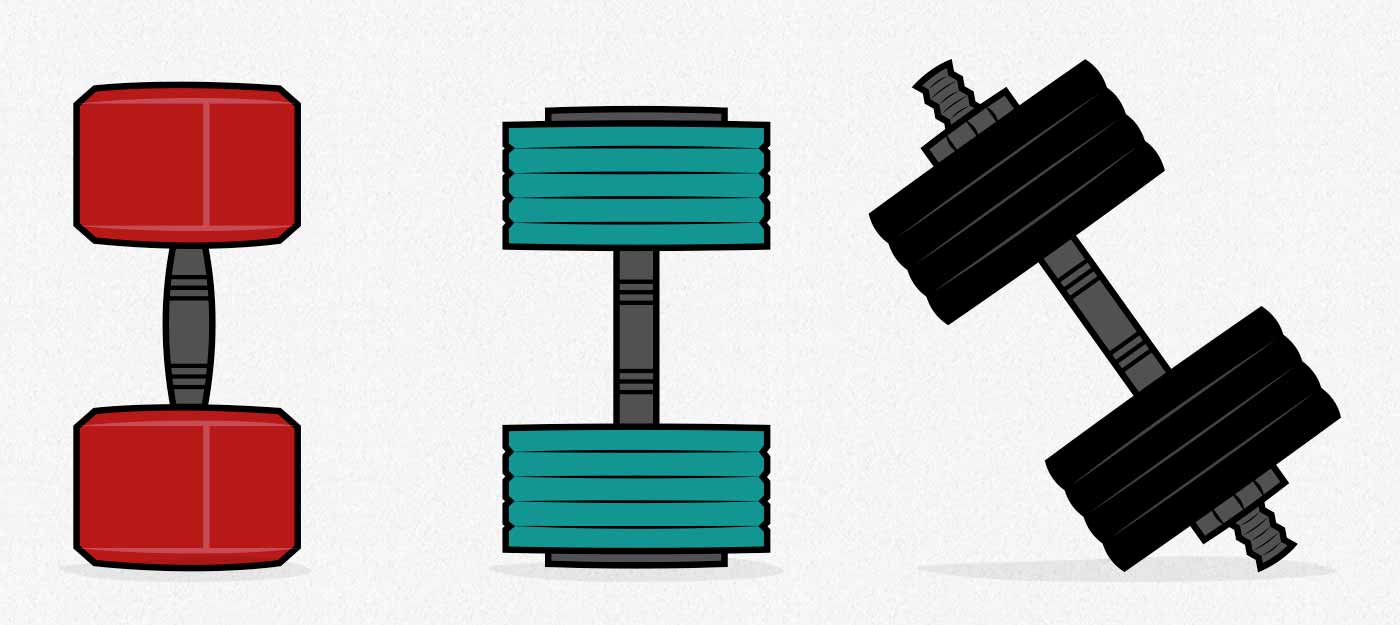
- Fixed-weight dumbbells (left): most commercial gyms have an assortment of fixed-weight rubber dumbbells, which are incredibly sturdy, don’t rust, and can be tossed around without breaking. These are great, but getting a whole set running from 10 to 100 pounds can be pricy. Plus, they take up a ton of space.
- Premium adjustable dumbbells (middle): Powerblock (Marco’s choice) and IronMaster (see review in comments) make sturdy adjustable dumbbells that are durable and easy to adjust. Their flat sides also make it easier to set up for most lifts. These are old brands with great reputations that have stood the test of time. We recommend these if you can afford them.
- Cheap adjustable dumbbells (right): several brands make cheap adjustable dumbbells you can load with little metal plates. They’re a bit more awkward than the premium ones, and they make it harder to do certain lifts (such as the dumbbell bench press), but they get the job done. I gained muscle with these without a problem, but I didn’t love them.
Dumbbells Versus Barbells
Dumbbells and barbells have a couple of key differences:
- Barbell lifts are heavier, engaging more muscle mass and putting more load on your spine, making them efficient but fatiguing. Dumbbell lifts are lighter, demanding more stabilizer strength, making them less efficient and less fatiguing.
- Barbell lifts lock your hands in place, forcing specific movement patterns and making the lifts feel a bit easier. Dumbbells allow you to move more freely, making them easier on your joints, but also making them feel a bit harder.
- There are only so many lifts you can do with a barbell. Dumbbells offer quite a bit more flexbility.
As for gaining muscle and strength, though, both barbells and dumbbells are pretty much perfect. Whichever approach you take, you can gain muscle and strength at full speed. These are the two best tools for building muscle in the world.
Using Kettlebells At Home
The problem with kettlebell training is that because you can’t adjust the weight, you need to adjust your reps instead. Instead of adding 5 pounds each workout, you need to fight for extra reps instead. As with bodyweight training, that can quickly become a nightmare. That’s why dumbbells are so great. They make progressive overload so simple. They allow you to follow a proper bulking routine.
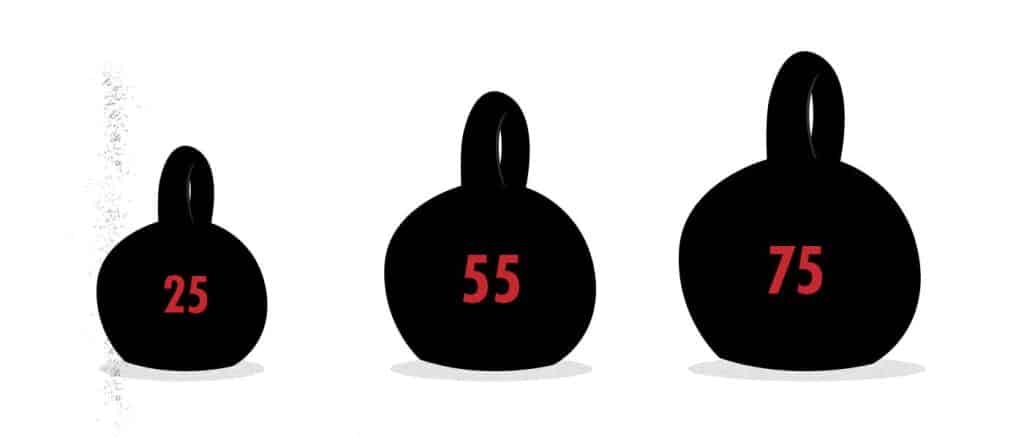
Even so, when I added kettlebells to my dumbbell home gym, I started enjoying my workouts way more. Kettlebells aren’t better for building muscle, and they didn’t improve my results.
But some exercises feel better with kettlebells than dumbbells. They’re sturdy and ergonomic, and they have a lower centre of gravity, making them easier to balance. They don’t work well for all exercises—they’re awful for bench presses and biceps curls—but they’re great for some. In my case, I prefer doing my overhead presses, squats, and triceps exercises with kettlebells.
The other benefit is that having a few kettlebells lying around allows you to perform more of your exercises as supersets. You can do a set of dumbbell bench presses and then a set of goblet squats without needing to adjust the weight of your dumbbells. They’re handy and efficient.
- Rogue Kettlebells ($100): I recommend buying an 18-pound and 40-pound kettlebell. That way, you have a light and medium weight, giving you more flexibility with your rep ranges and exercise variations.
Many of our members have some kettlebells in their home gyms, and they all swear by them. Kettlebells aren’t necessary, but they’re nice to have. I think you’d enjoy them.
Using Resistance Bands At Home
Resistance bands are popular because they’re cheap and portable. The problem is, they’re hard to load gradually heavier, and the movements you can do with them are somewhat limited. Perhaps most importantly, they make it difficult to challenge our muscles through a deep range of motion. That’s why serious lifters rarely use them. But even for casual lifters, they can make it harder to build muscle.
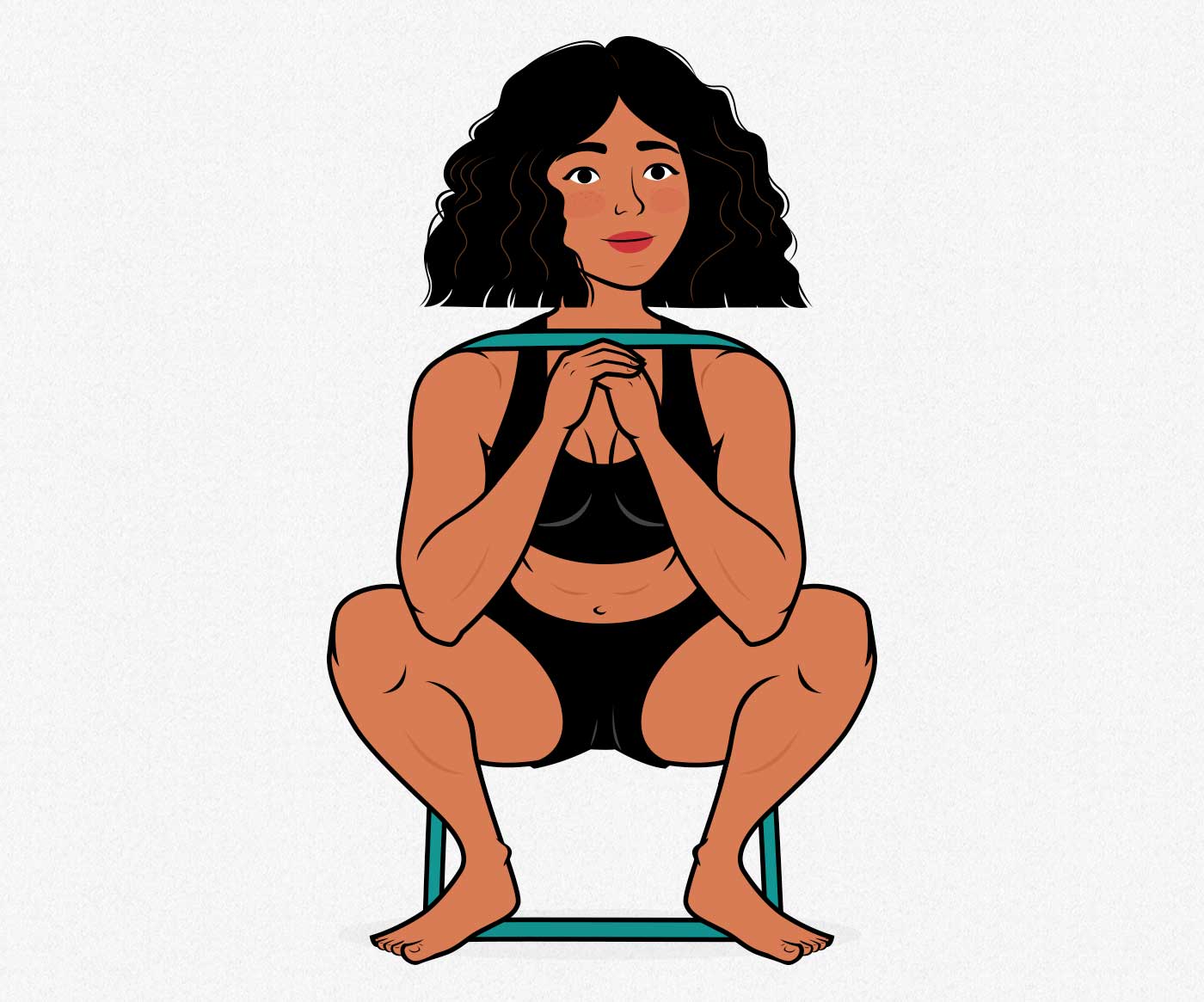
The main downside to resistance bands is that they get progressively more challenging as you stretch them further. As a result, the deep part of the range of motion tends to be much easier than the top part. This isn’t a resistance curve that occurs in nature, and it doesn’t seem to line up very well with our natural strength curves. Plus, it’s the deepest part of the range of motion where our muscles are strongest, where muscle tension is the highest, and where we stimulate the most muscle growth. If we minimize the challenge at the bottom of our lifts, we make it harder to build muscle.
With that said, you can build muscle with almost anything. Resistance bands do put resistance on your muscles. You may not build muscle as fast, but you can still build muscle. That’s where the second problem comes in: resistance-band workouts hurt! When you shift so much emphasis to the lockout portion of the lift, you get a crazy burn and tons of pain. It feels like you’re working damn hard. But the training is less effective, so you need to push through more pain, doing even more reps, even more sets. It makes building muscle hard.
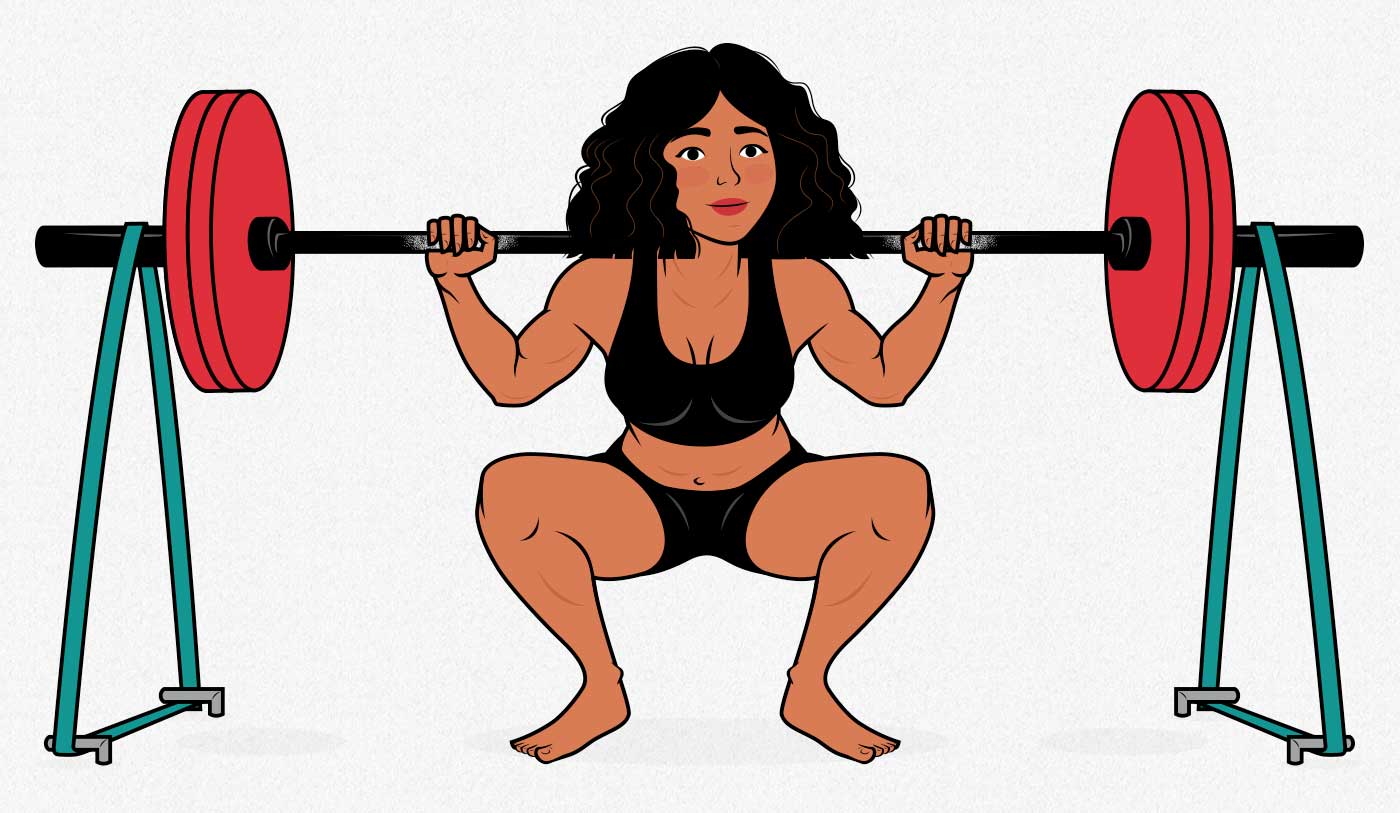
Resistance bands can be handy to have around, though. Combining them with barbell lifts (accommodating resistance) may even improve the resistance curve. Plus, there are some good resistance-band drills and exercises. But we don’t usually recommend using only resistance bands to build muscle.
At the moment, we don’t recommend resistance bands as a default option. It’s not that they don’t work; it’s just that they’re painful and inefficient. You may need to do several sets of resistance-band exercises to get the same muscle growth as you’d get from a single set of a dumbbell exercise. Plus, resistance-band training tends to feel harder and more painful (study, study).
For more, we have an article breaking down the research on resistance bands.
Doing Bodyweight Exercises At Home
Bodyweight exercises are popular because they are cheaper and more portable than resistance bands. They’re also even harder to load heavier progressively, making the workouts a bit more complicated. But on the bright side, they are ideal for building muscle.
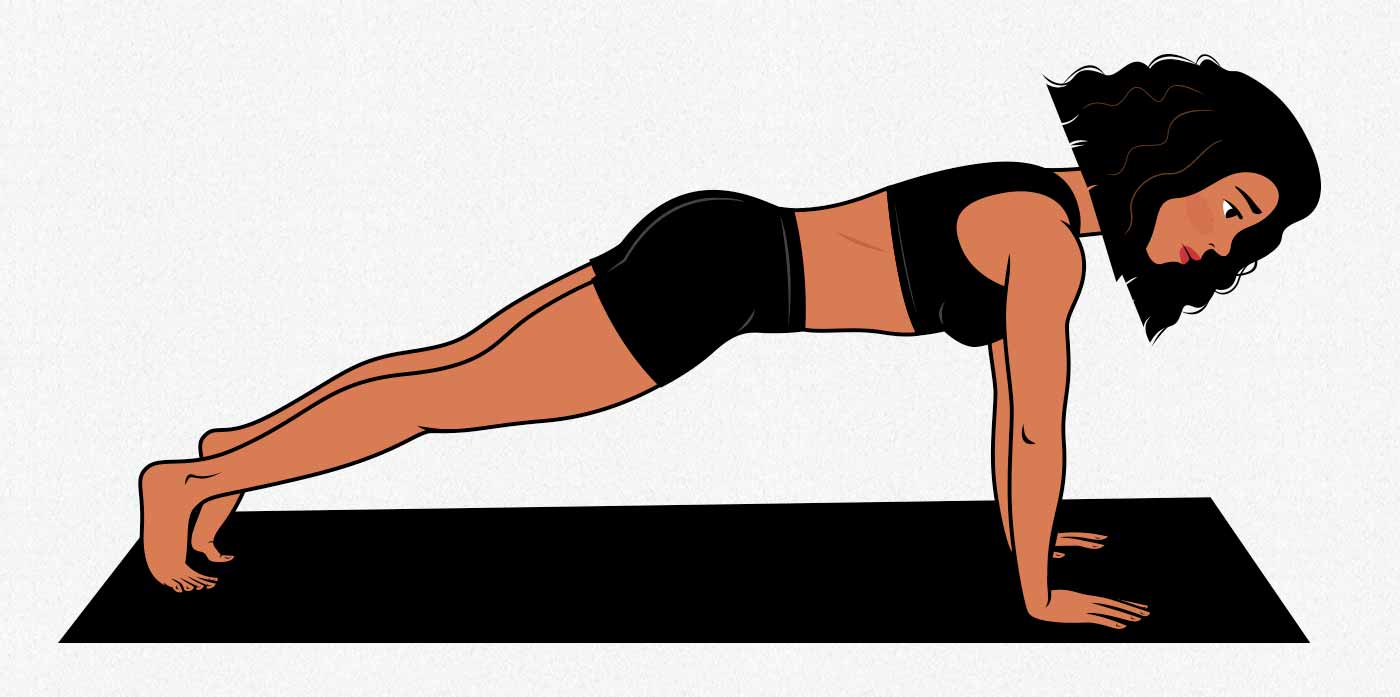
Just like with barbells and dumbbells, lifting your own body weight is a very natural thing to do. The resistance curves align well with our strength curves. The lifts are most challenging near the bottom, where your muscles are stretched—where your muscles are strongest. This makes bodyweight exercises perfect for stimulating muscle growth.
The downside is that, similar to resistance bands, bodyweight workouts can be super painful, especially as you start to get stronger. Building your way up to 20 push-ups isn’t so bad. But doing bodyweight squats can be pretty rough. You’ll need to delve into higher rep ranges. And the more reps you do, the more your muscles will burn, the more your body will beg you to give up, and the harder it will be to get into the habit of consistently working out.
As a result, we usually recommend getting some adjustable dumbbells, even if they’re super cheap. If you hold a dumbbell in your hands, all of a sudden, your squats are heavier, you won’t need to do as many reps, and they won’t feel so hard. But if you want to start with bodyweight training, rest assured that you can build a tremendous amount of muscle. You’ll just need to grit your teeth.
For more, we have an article on bodyweight hypertrophy training.
Getting A Membership At A Commercial Gym
No surprise that if you go to a commercial gym, they’ll have everything you need to build muscle. They’ve got dumbbells, barbells, exercise machines, and cable machines. All of those are great for building muscle. They’re stable exercises that allow us to load a little bit more weight every workout.
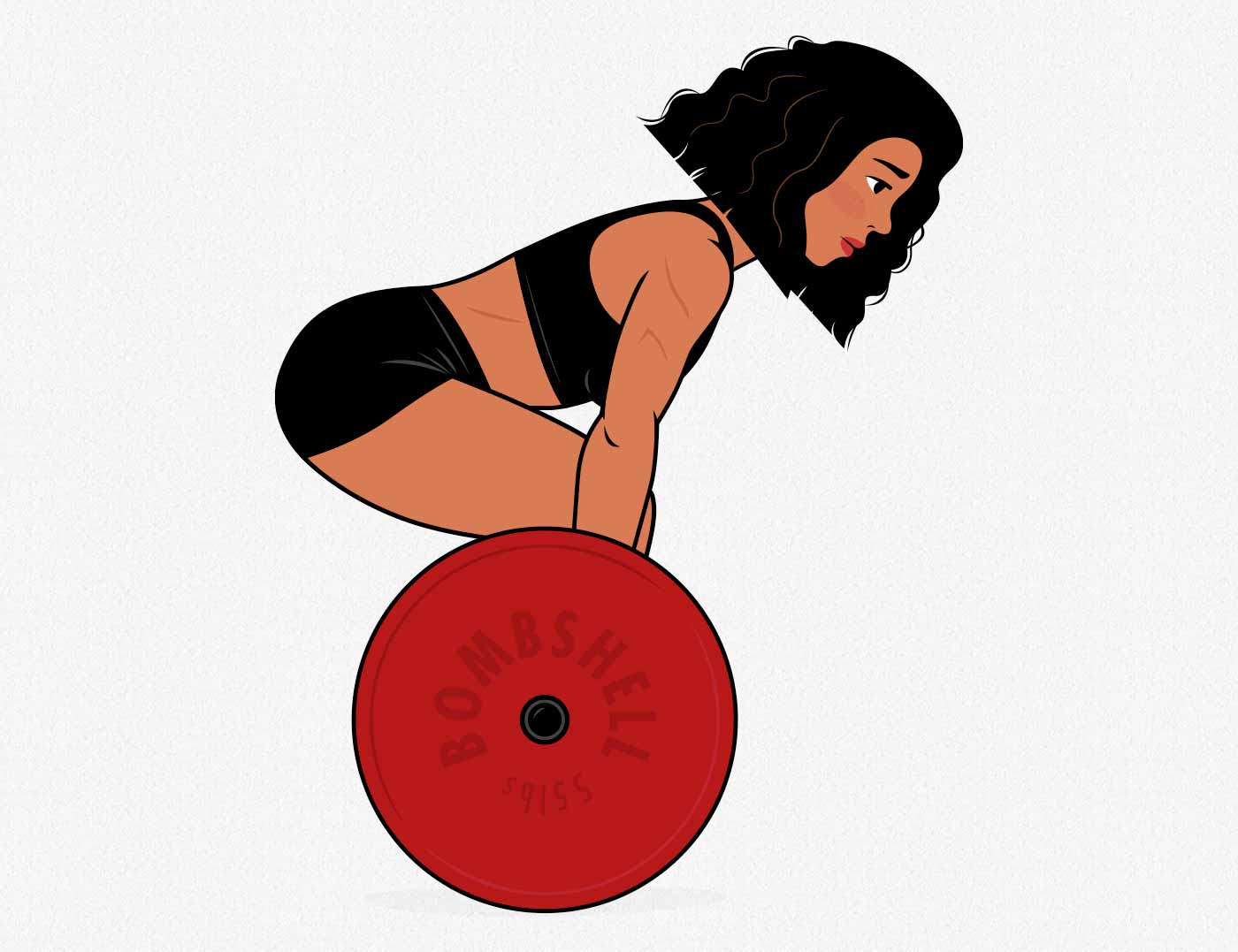
The downside is that it can be inconvenient. In addition to the time it takes to do your workout, you need to budget for the time it takes to travel there and back. That can add up, especially if you’re trying to squeeze in your workouts before work or after the kids go to bed.
The main downside we hear about, though, is that it can be a bit intimidating to go to the gym as a skinny woman all by yourself. And I get that. I used to feel that way, too. I gained a full twenty pounds before building up the courage to go to a commercial gym. I shouldn’t have felt that way. Skinny beginners are welcome at every gym I’ve ever been to. Everyone there was a beginner once, too. But I understand the hesitation. Especially when you want to do glute isolating exercises like the barbell glute bridge—but you’re in a fairly public space…
Building a Barbell Gym Set-Up At Home
A barbell home gym is an efficient way to train at home. Barbells make building muscle very easy. They’re very stable, they’re easy to load up gradually heavier, and barbell exercises tend to engage the most muscle mass, making your workouts extremely efficient.
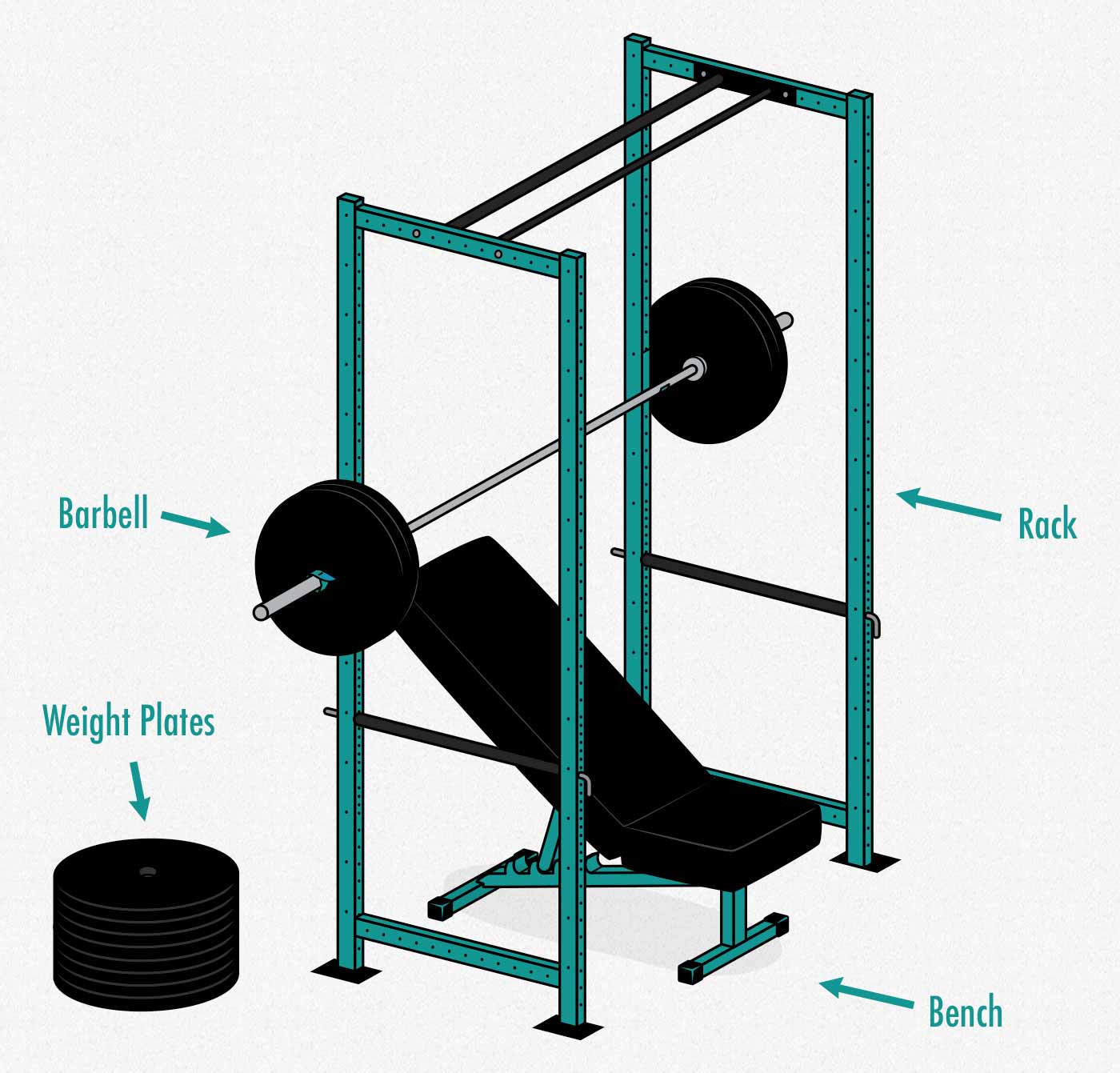
The downside is that a barbell home gym will run you $1,000–4,000 if you buy it from a high-quality brand like Rogue Fitness, and they take up a lot of space. For people with some disposable income and a spare room, garage, or basement, it’s perfect. For people living in smaller houses or apartments, it’s a no-go.
I’ve gone to commercial gyms, used a dumbbell home gym, and used a barbell home gym. The barbell home gym is my favourite, and it’s how Cassandra and I train now. It’s great.
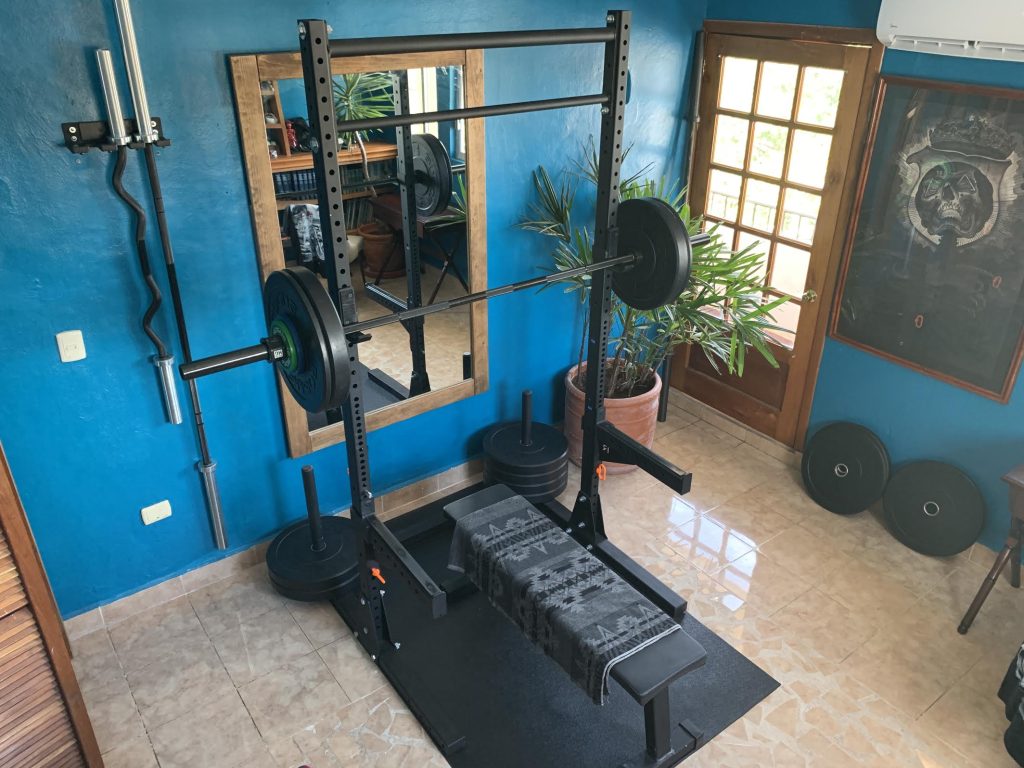
For more, we have an article on how to build a barbell home gym.
Summary
You can build muscle fast with anything, including your own bodyweight. If you challenge your strength and fight to grow stronger over time, you can stimulate muscle growth. If you combine those workouts with a good muscle-building diet, you’ll grow bigger, curvier, and stronger. With that said, some equipment makes it much easier to build muscle. If you can manage it, the three best setups for building muscle are:
- Adjustable dumbbells—10/10: ideal for apartments and privacy.
- Commercial gym—10/10: ideal for exercise variety.
- Barbell home gym—10/10:, ideal for women with large homes who want variety and privacy.
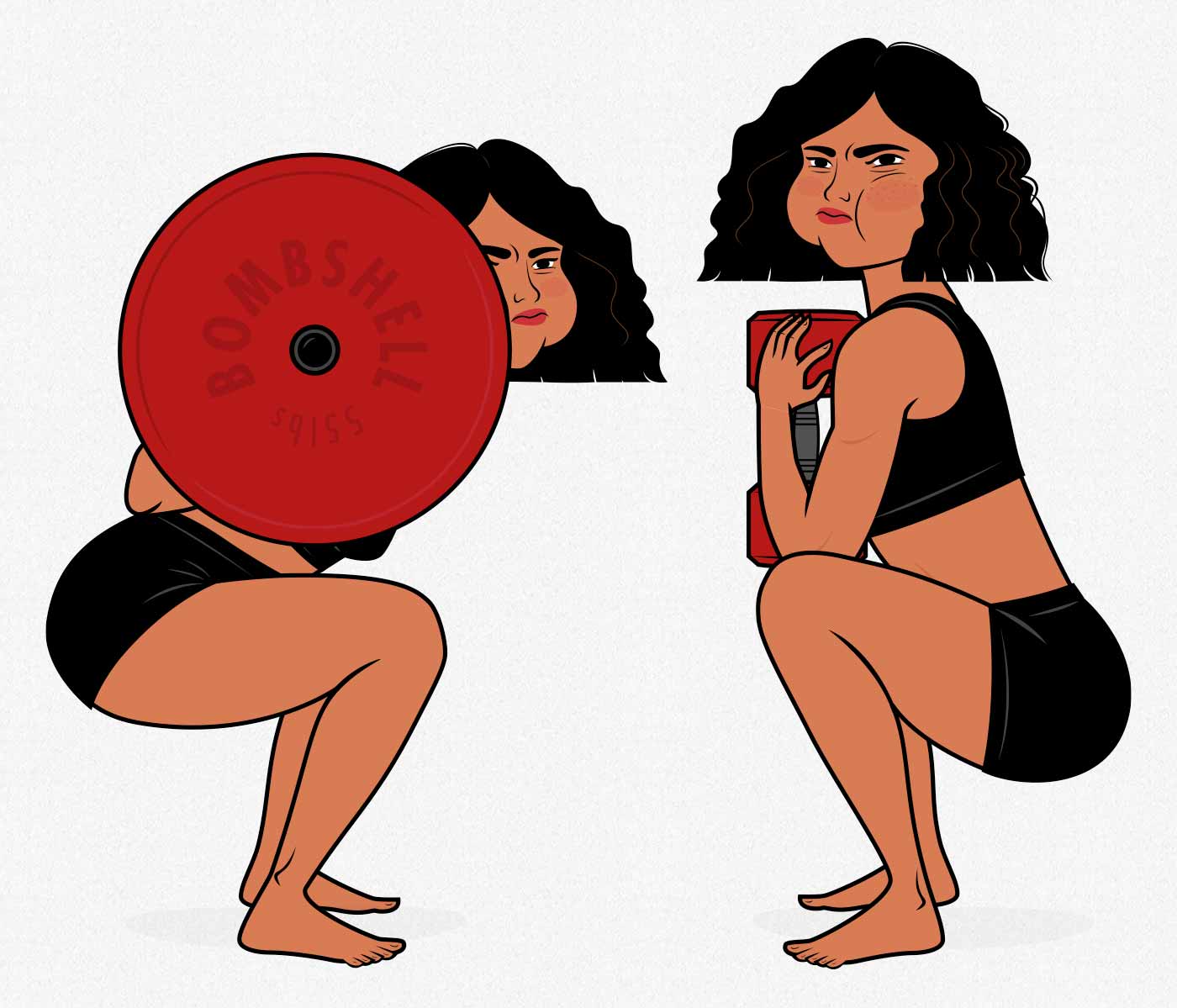
All three of those options are perfect. I mean, technically, you might be able to argue that a commercial gym is best. And you’d kind of be right. Commercial gyms have the widest variety of exercises, and it’s definitely nice to have access to a leg press machine, cables, barbells, and dumbbells. But you can gain just as much muscle and strength with a barbell or dumbbell home gym, and your workouts will be similarly efficient.
If you can’t train at a commercial gym or build a home gym, we recommend starting with bodyweight training. It’s great for building muscle. The main downside is that it hurts. And it can also be a bit more complicated. But if you can tough it out, you’ll do great.
If you liked this article, you’d love our muscle-building newsletter. We’ll keep you up to date on all the latest muscle-building information for women. Or, if you want us to walk you through the process of gaining muscle and strength, including teaching you the exercises, giving you a structured 5-month workout program, a complete diet guide, a recipe book, and online coaching/customization, check out our Bony to Bombshell Program.


